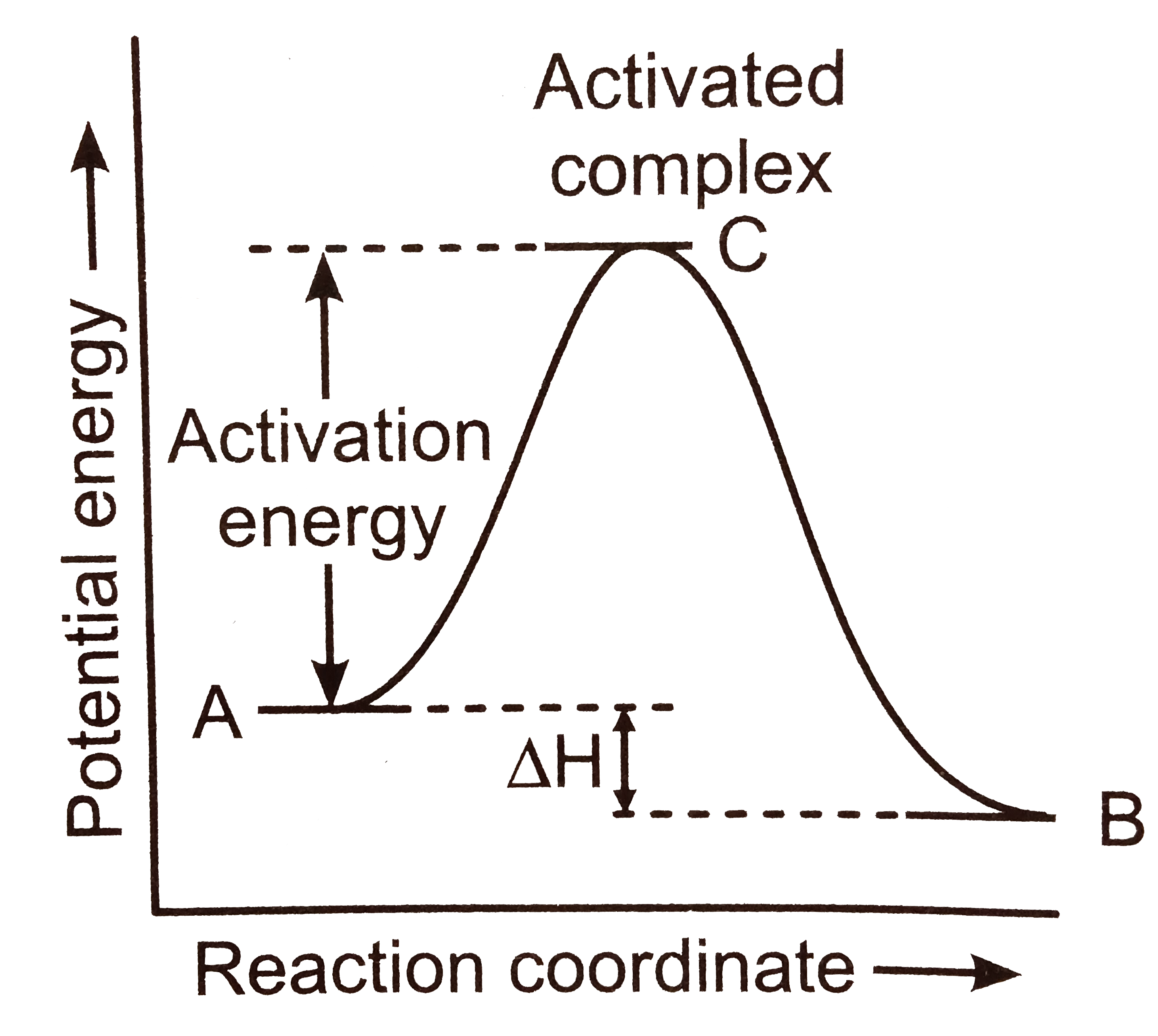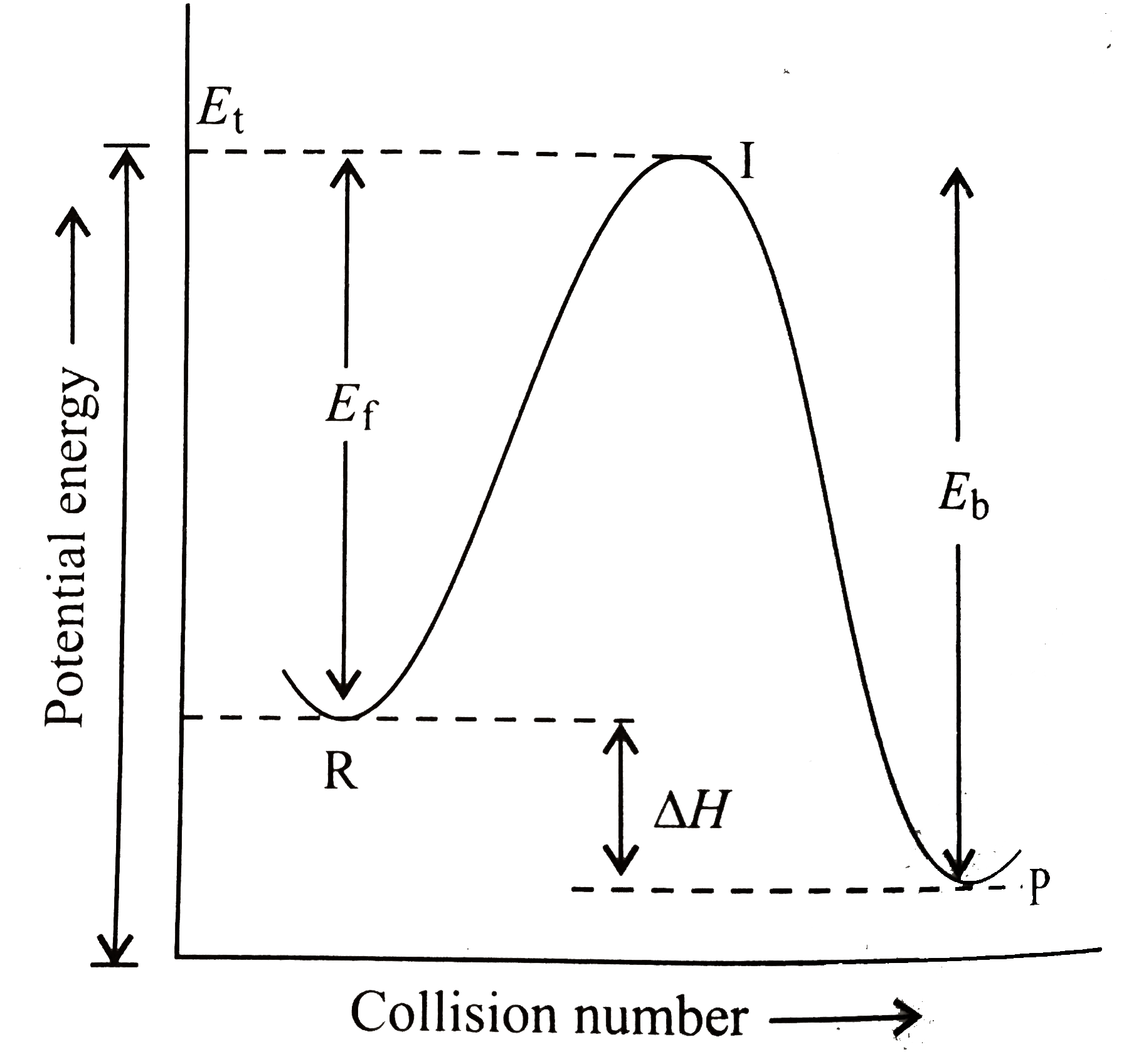If a reaction , A+B→C , is exothermic to the extent of 30kJ/mol and the forward reaction has an activation energy 70kJ/mol, the activation energy for the reverse reaction is
30kJ/mol
40kJ/mol
70kJ/mol
100kJ/mol
The correct Answer is:D

Activation energy for backward reaction =100kJ
Topper's Solved these Questions
- CHEMICAL KINETICS AND RADIOACTIVITYBOOK - FIITJEECHAPTER - CHEMICAL KINETICS AND RADIOACTIVITYEXERCISE - Comprehension I
3 Videos
- CHEMICAL KINETICS AND RADIOACTIVITYBOOK - FIITJEECHAPTER - CHEMICAL KINETICS AND RADIOACTIVITYEXERCISE - Comprehension II
2 Videos
- CHEMICAL KINETICS AND RADIOACTIVITYBOOK - FIITJEECHAPTER - CHEMICAL KINETICS AND RADIOACTIVITYEXERCISE - Solved problem (subjective)
15 Videos
- CHEMICAL EQUILIBRIUMBOOK - FIITJEECHAPTER - CHEMICAL EQUILIBRIUMEXERCISE - MATCHING TYPE QUESTIONS
3 Videos
- CHEMISTRY IN EVERY DAY LIFE BOOK - FIITJEECHAPTER - CHEMISTRY IN EVERY DAY LIFE EXERCISE - ASSIGNMENT PROBLEMS (OBJECTIVE) Level - II (Numerical Based Questions)
5 Videos
Similar Questions
If a reaction A+B→C is exothermic to the extent of 30KJ/mol, the forward reaction has an activation energy 70KJ/mol. The activation energy for the reverse reaction is
View SolutionIf a reaction A+B→C is exothermic to the extent of 30KJmol−1, the the forward reaction has an activation energy , 70KJmol−1, the activation energy for the reverse reaction is
View Solution
Knowledge Check
If a reaction A+B→C is exothermic to the extent of 30 kJ/mol and the forward reaction has an activation energy of 70 kJ/mol, the activation energy for the reverse reaction is
A30 kJ/molB40 kJ/molC70 kJ/molD100 kJ/molIf a reaction A + B → C, is exothermic to the extent of 30 kJ/mol and the forward reaction has an activation energy of 249 kJ/mol, the activation energy for reverse reaction in kJ/mol is
A324B279C40D100The energy required to form the intermediate, called activated complex (C) is known as activation energy (Ea). The diagram is obtained by plotting potential energy vs. reaction coordinate. Reaction coordinate represents the profile of energy change when reactants change into products.
Some energy is released when the complex decomposes to form products. So, the heat of the reaction depends upon the nature of reactants and products.

If a reaction A+B→C, is exothermic to the extent of 30kJmol−1 and the forward reaction has an activation energy of 249kJmol−1, the activation energy for reverse reaction in kJmol−1 is:A(a) 324B(b) 279C(c ) 40D(d) 100
A colliison between reactant molecules must occur with a certain minimum energy before it is effective in yielding Product molecules. This minimum energy is called activation energy Ea Large the value of activation energy, smaller the value of rate constant k. Larger is the value of activation energy, greater is the effect of temperature rise on rate constant k.

Ef= Activation energy of forward reaction
Eb= Activation energy of backward reaction
ΔH=Ef−Eb
Ef= threshold energy
If a reaction A+B→C is exothermic to the extent 30kJmol−1 and the forward reaction has an activation energy of 249kJmol−1 the activation energy for reverse reaction in kJmol−1 is
View SolutionThe reaction A+B→C+D+40KJ has activation energy of "18KJ" .Then the activation energy for the reaction C+D→A+B is
View SolutionIf a reaction A+B→C is exothermic to the extent of 30KJmol−1, the the forward reaction has an activation energy , 70KJmol−1, the activation energy for the reverse reaction is
View SolutionA colliison between reactant molecules must occur with a certain minimum energy before it is effective in yielding Product molecules. This minimum energy is called activation energy Ea Large the value of activation energy, smaller the value of rate constant k. Larger is the value of activation energy, greater is the effect of temperature rise on rate constant k.

Ef= Activation energy of forward reaction
Eb= Activation energy of backward reaction
ΔH=Ef−Eb
Ef= threshold energy
If a reaction A+B→C is exothermic to the extent 30kJmol−1 and the forward reaction has an activation energy of 249kJmol−1 the activation energy for reverse reaction in kJmol−1 is
View SolutionThe activation energy for the forward reaction X→Y is 60kJmol−1 and ΔH is −20kJmol−1. The activation energy for the reverse reaction is
View Solution
